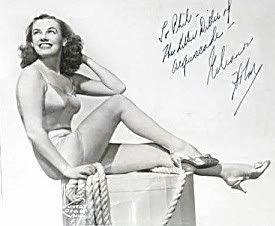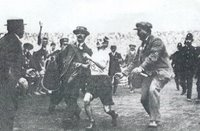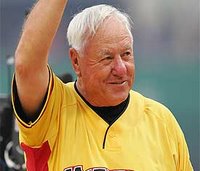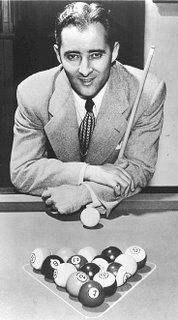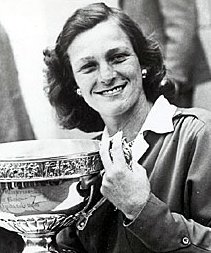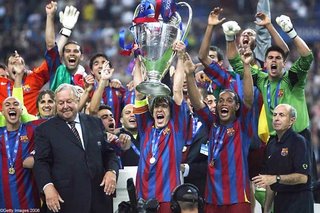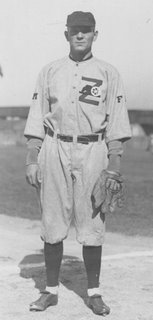Sweet Wilma

First American woman to win three gold medals in the Olympics, born 1940 in St. Bethlehem, Tennessee; died of brain cancer, November 12, 1994 in Nashville, Tennessee.
From the unlikeliest of beginnings, Wilma Rudolph became one of the most admired women of the 20th century. Her father was a porter and her mother was a housekeeper 6 days a week in a Southern town which was still gripped by Jim Crow. She was born prematurely, weighing just 4-1/2 pounds, the sixteenth of her father's nineteen children (11 of them were stepbrothers and sisters). The doctors didn't give her much of a chance of survival, but she lived through several bouts of illness in her first 3 years. When she was 4, she contracted double pneumonia, scarlet fever and polio, and the prognosis was grim; soon the muscles in her left leg and foot weakened to the point where she couldn't use them, and the doctors at the nearest hospital for blacks, 50 miles away from her hometown, said she'd never walk. For 2 years, Wilma's mother took her by bus to Nashville for physical therapy, bought her special shoes and put her leg in metal braces. Gradually she walked, but haltingly. When she was 11, she shocked her entire family by throwing away the braces during a church service and walking down the aisle. In short order she found she could also run, and she seemed to be a pretty good with a basketball, shooting hoops through the peach basket her brother had set up in their yard. At 13, she made the girls' basketball team at Clarksville High School and averaged 32.1 points per game, a state record. Her coach encouraged her to run, and she enjoyed an undefeated record before qualifying for U.S. Olympic track team in 1956.
In the Olympics at Melbourne, the 16-year old Rudolph won a bronze medal in the 4 x 100-meter relay. She entered Tennessee State University in 1957 to work with the famed coach of the Tigerbelle track team, Ed Temple. (For his part, Temple said his only contribution to Rudolph's greatness was that he reduced her intake of junk food.) She was sidelined with injuries over much of the next several years, and a tonsillectomy threatened to take her out of the 1960 Olympics. She managed to recover, however, setting a world record for the 200-meter dash during the Olympic trials. When she arrived in Rome, the foreign press was captivated by her charming smile, her graceful 5'-11" frame and her deceptively easy, long strides, calling her "La Perle Noire" (the "black pearl") or "La Gazzella Nera" (the "black gazelle"); indeed, even the American press made itself look a little silly by celebrating her beauty, after years of neglecting women athletes, especially African-American ones. By the end of the games, she had won the 100-meter dash by three yards with a time of 11 seconds; easily beat the field in the 200-meter dash with a time of 23.2 seconds; and, running the anchor leg of the 4 x 100-meter relay, she led the team to a world-record 44.4 second race despite a sloppy final pass of the baton, becoming the first American woman to win three gold medals at the Olympics.
After an audience with Pope John XXIII, she returned to Tennessee, where she was honored with the first ever racially-integrated parade in her hometown of Clarksville. Through it all, Rudolph radiated a sweetness which reflected the gratitude she felt for being given the chance to succeed, becoming one of the most beloved sports figures ever. After the Olympics she finished college; set a new world record in the 100-meter dash (11.2); and won the Sullivan Trophy as America's best amateur athlete (1961), becoming only the third woman to do so up to that time. She later had 4 children, wrote a best-selling autobiography (later filmed as Wilma, starring Cicely Tyson), modeled extensively, and worked tirelessly to support underprivileged athletes.
"She was always in my corner. If I had a problem, I could call her at home. It was like talking to someone you knew for a lifetime." -- Jackie Joyner-Kersee.
Labels: Sport, Trailblazing Women








